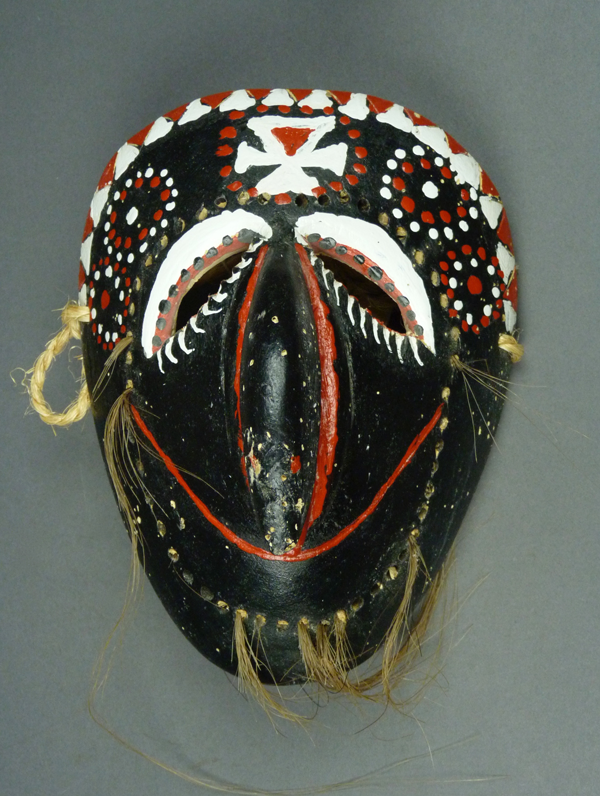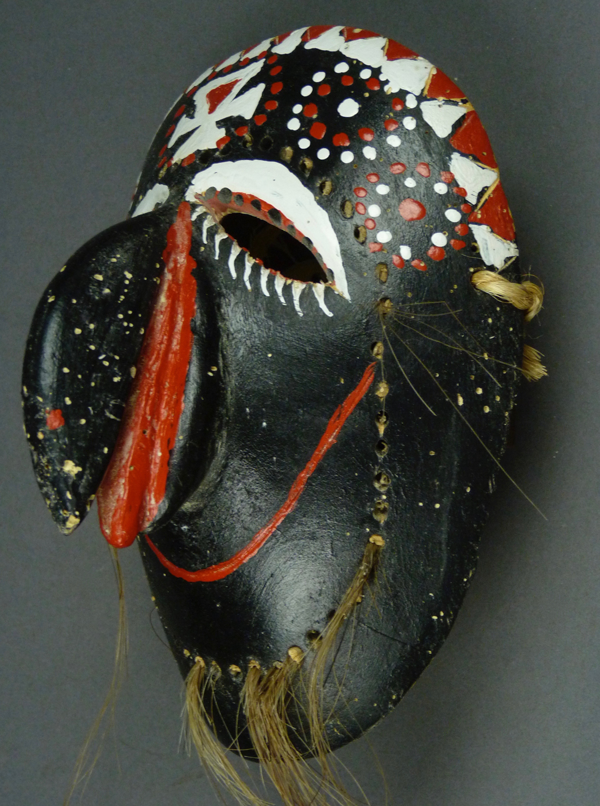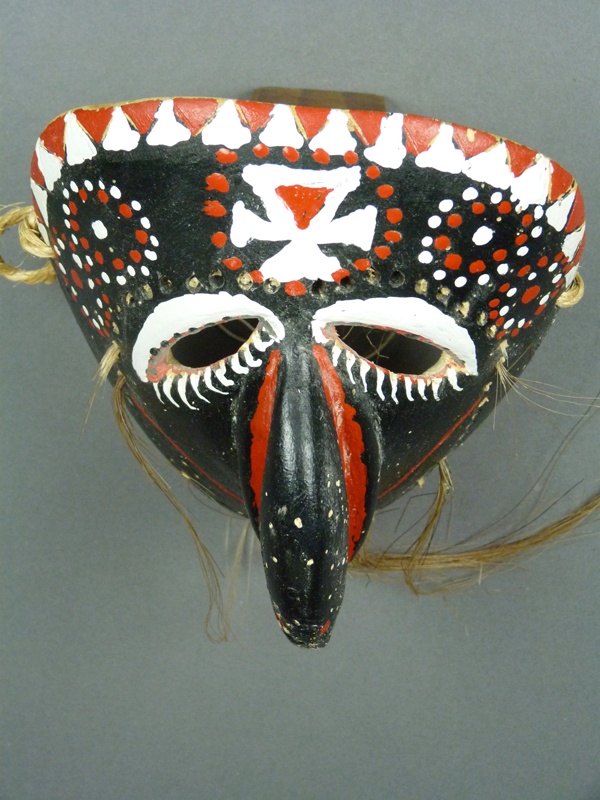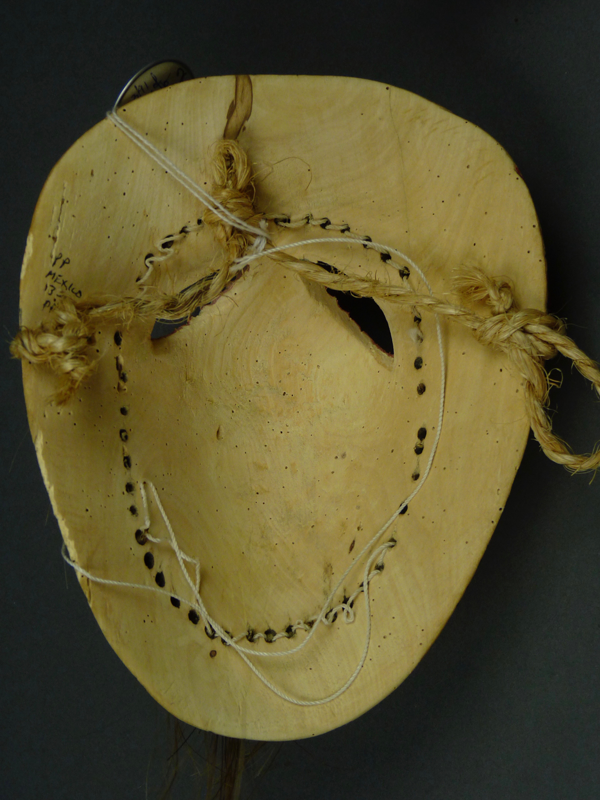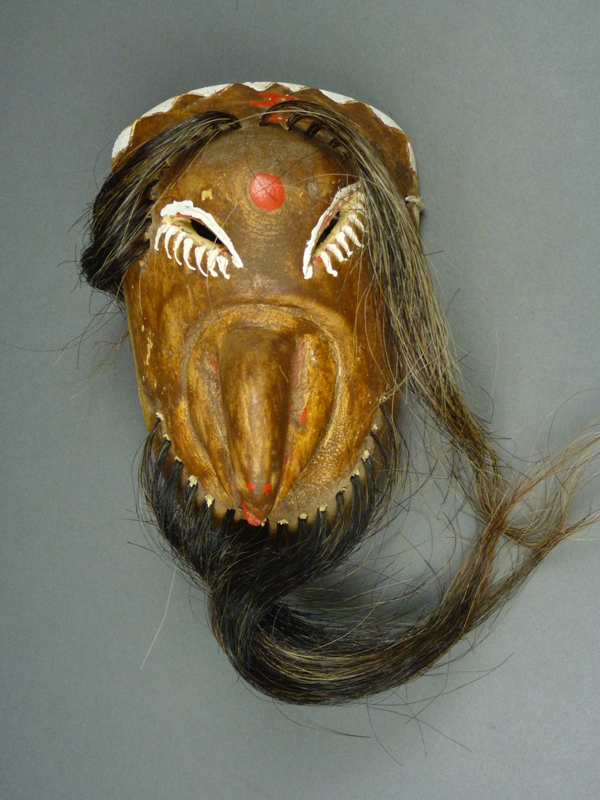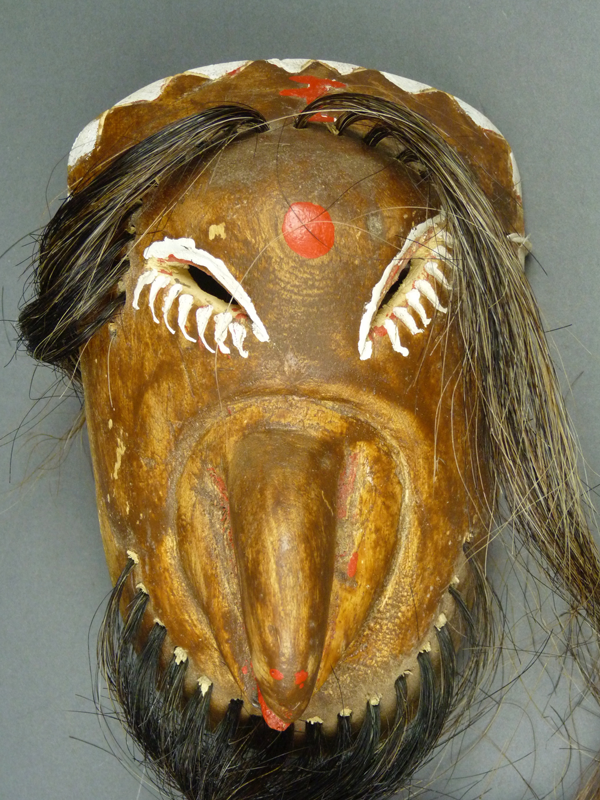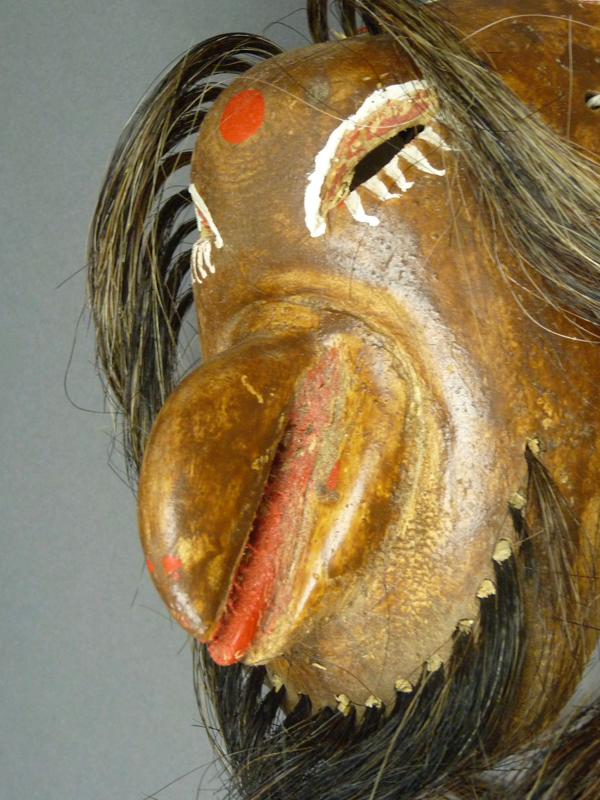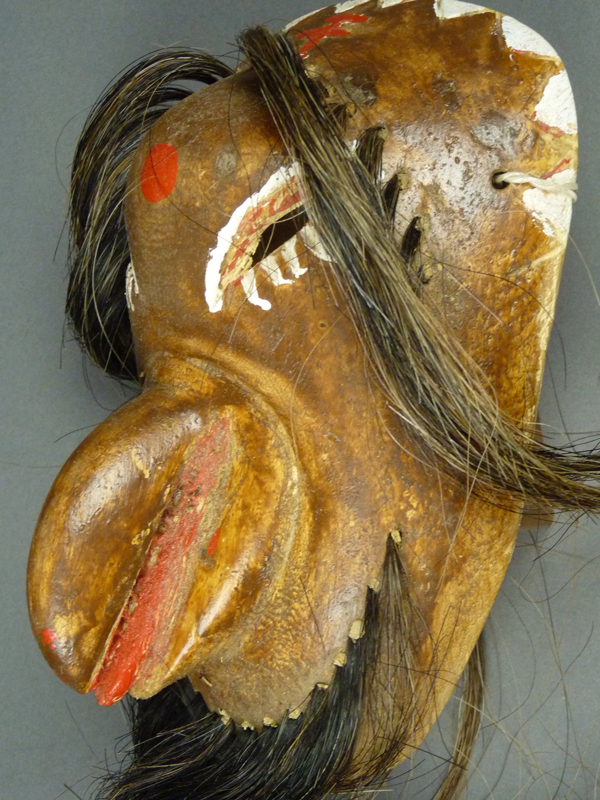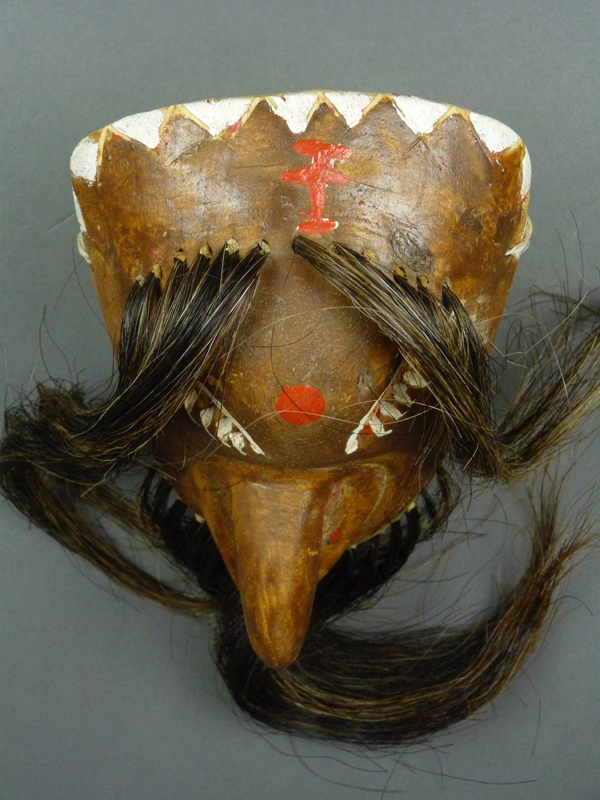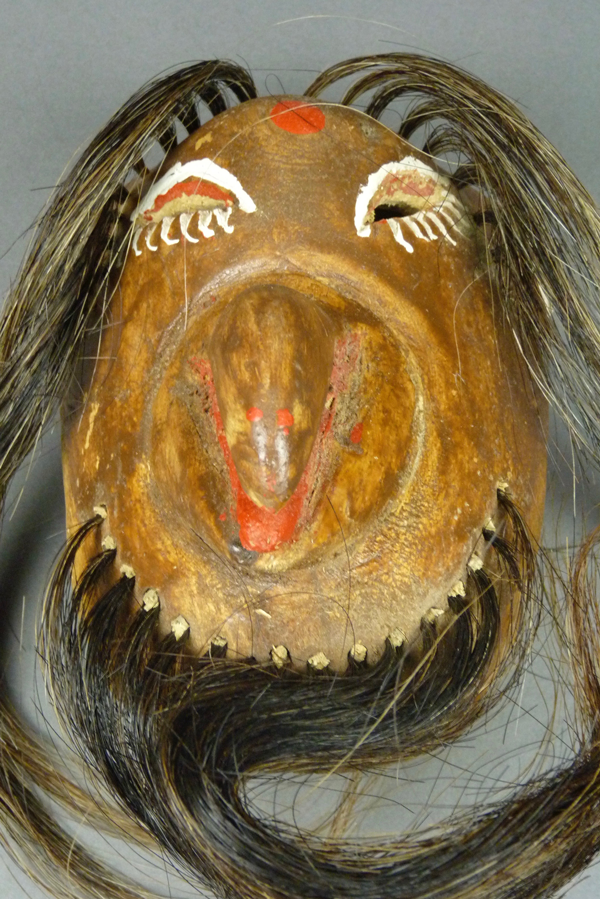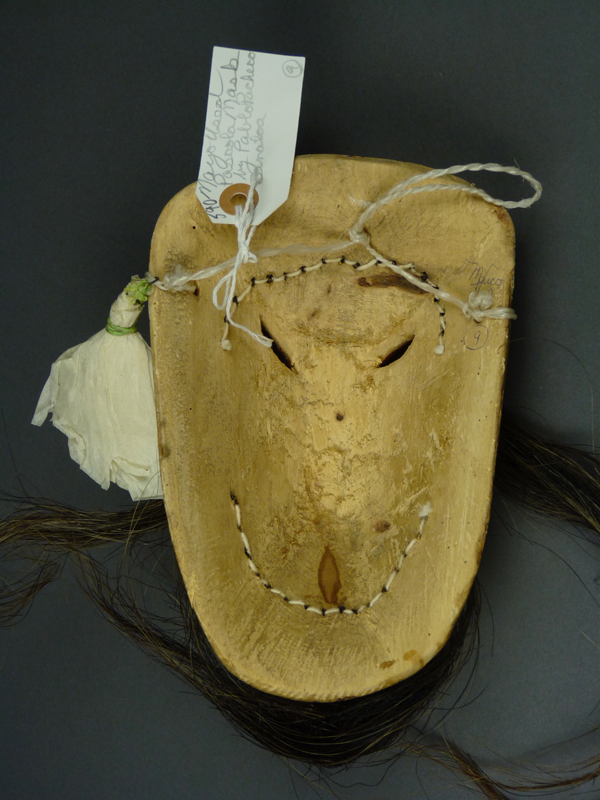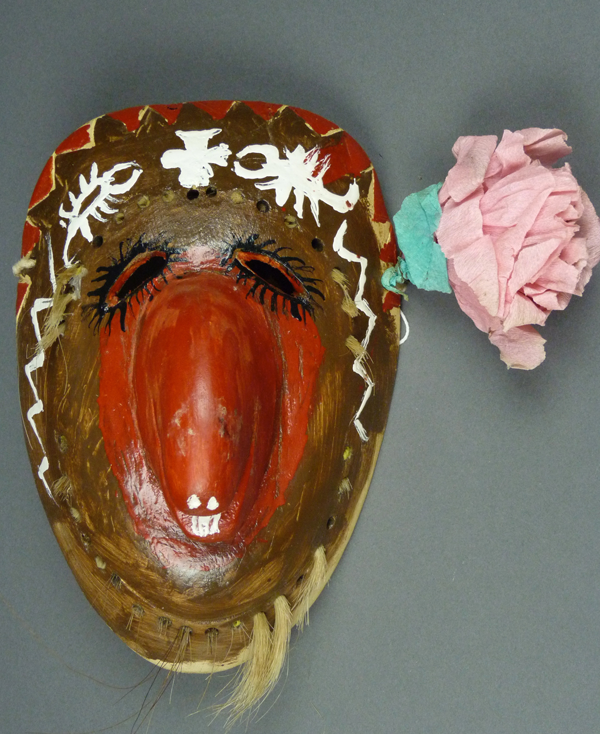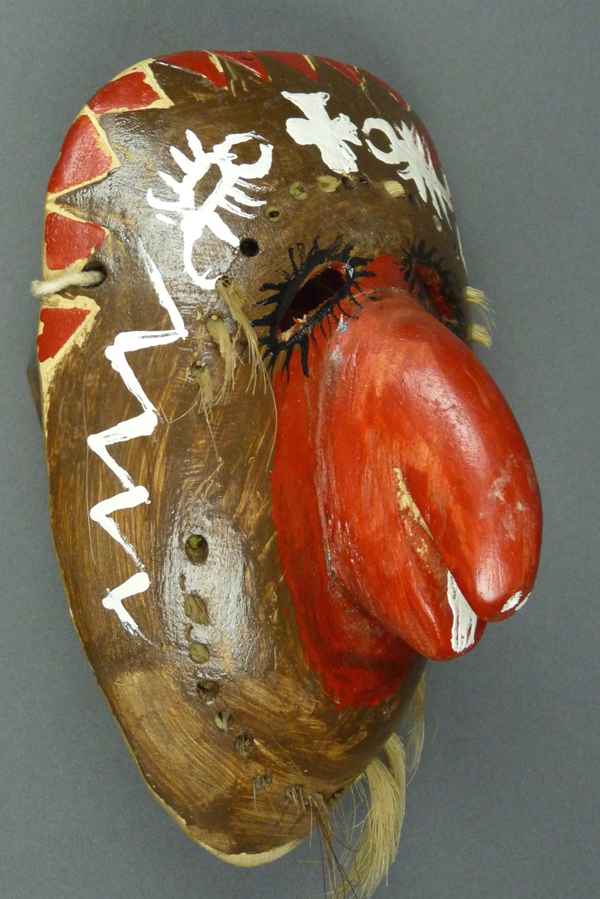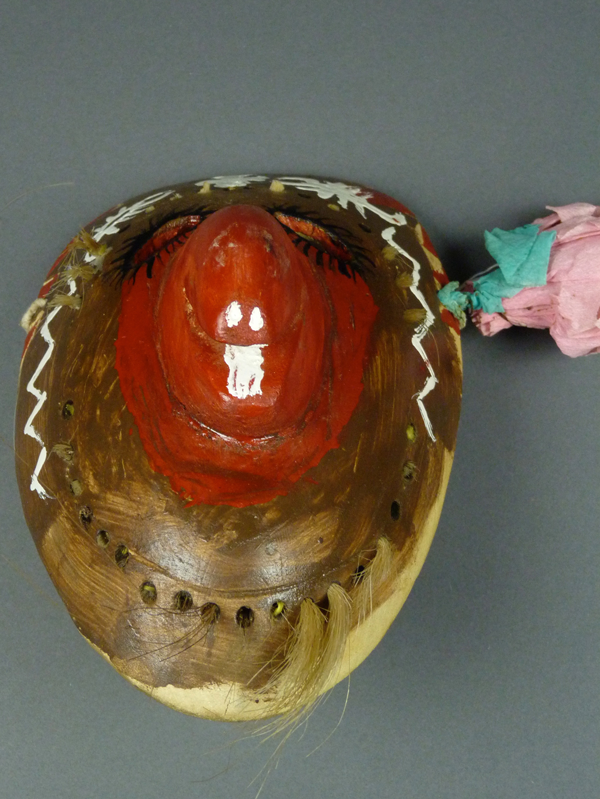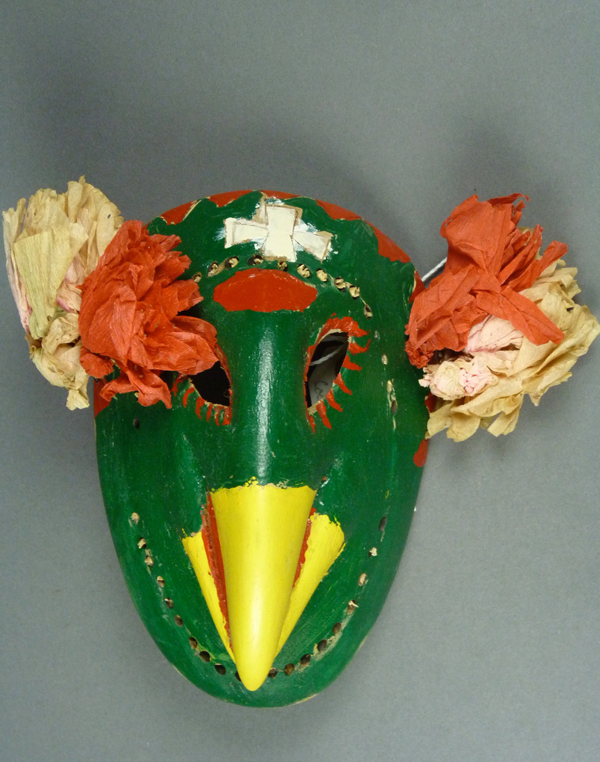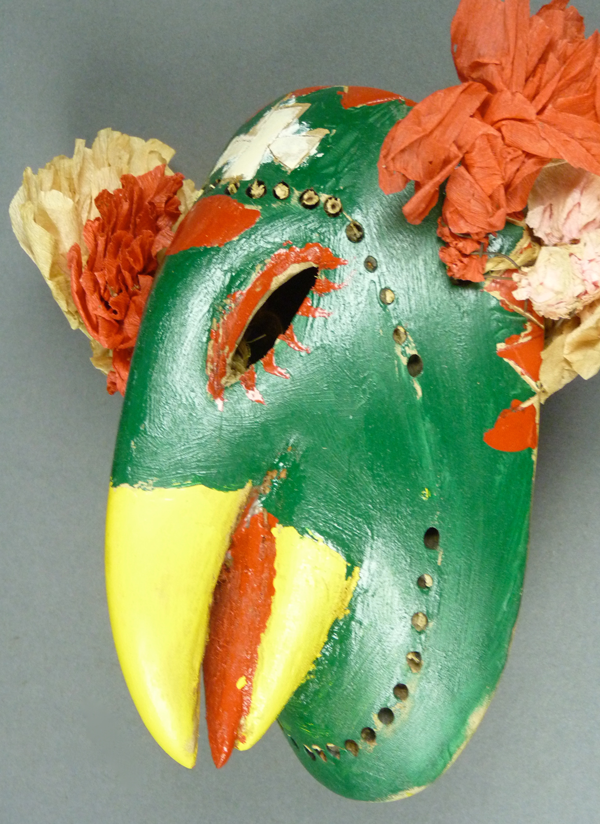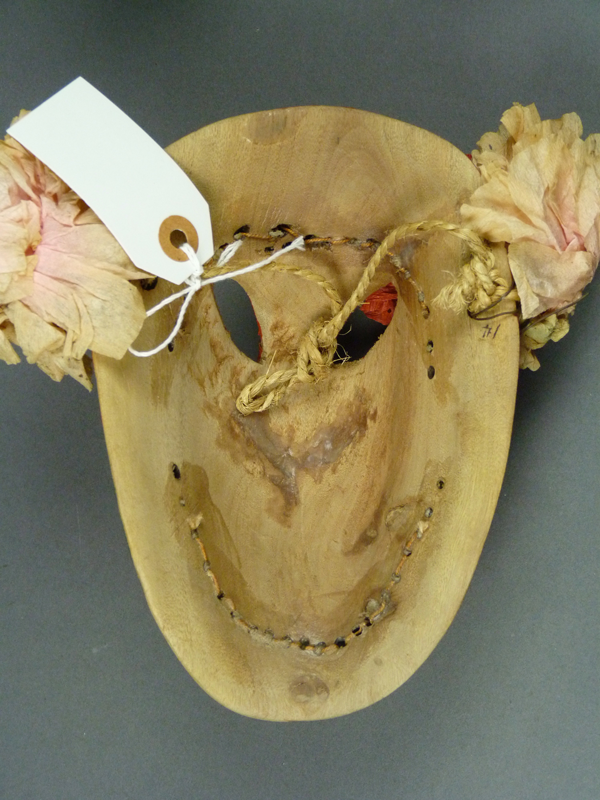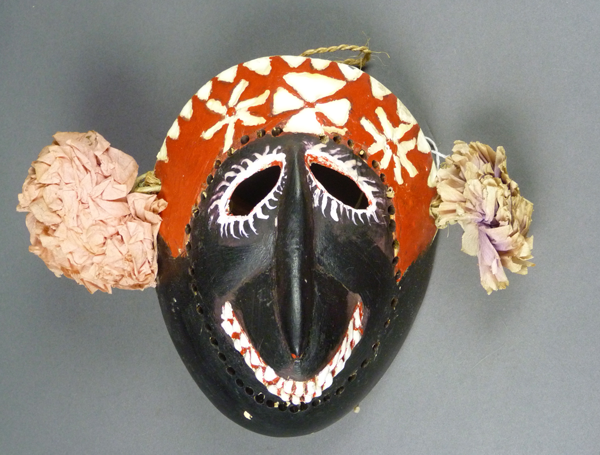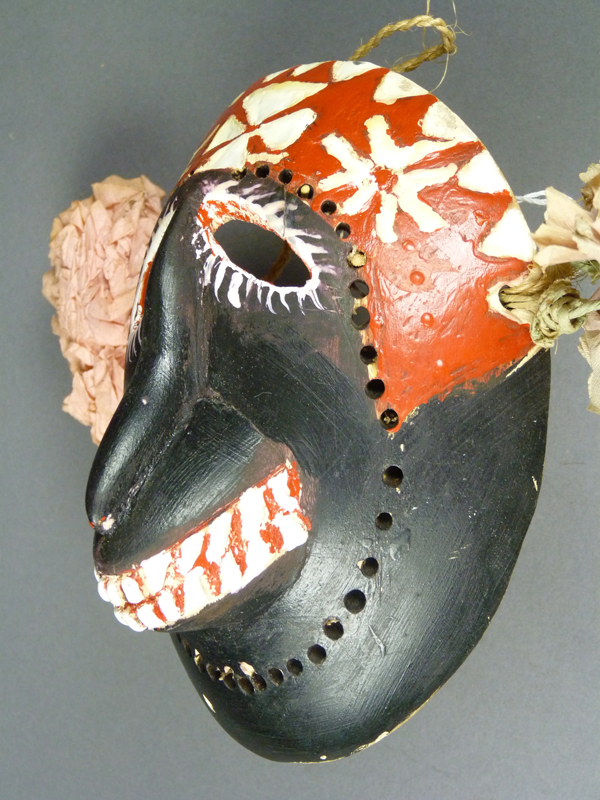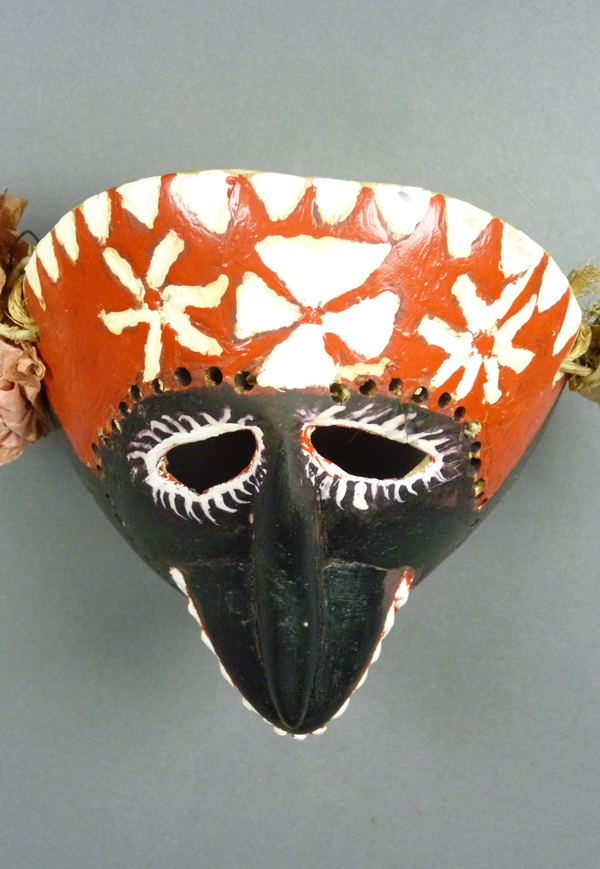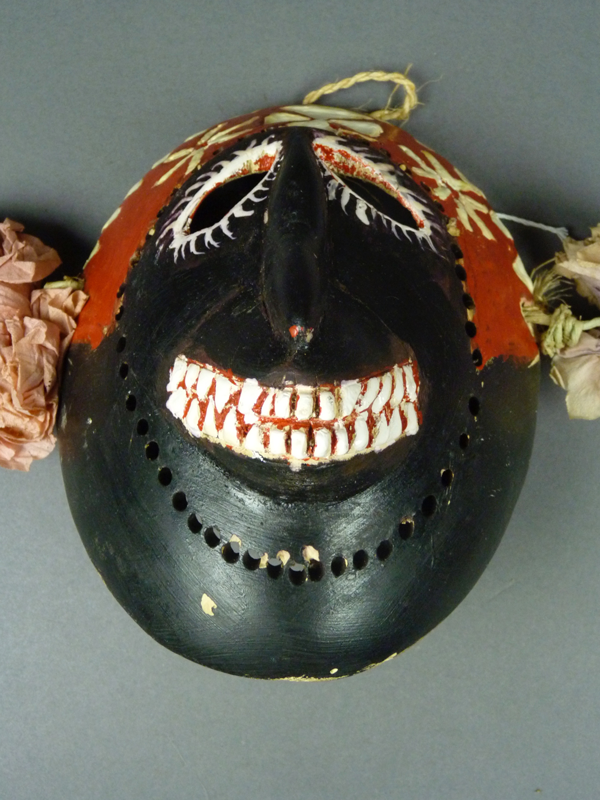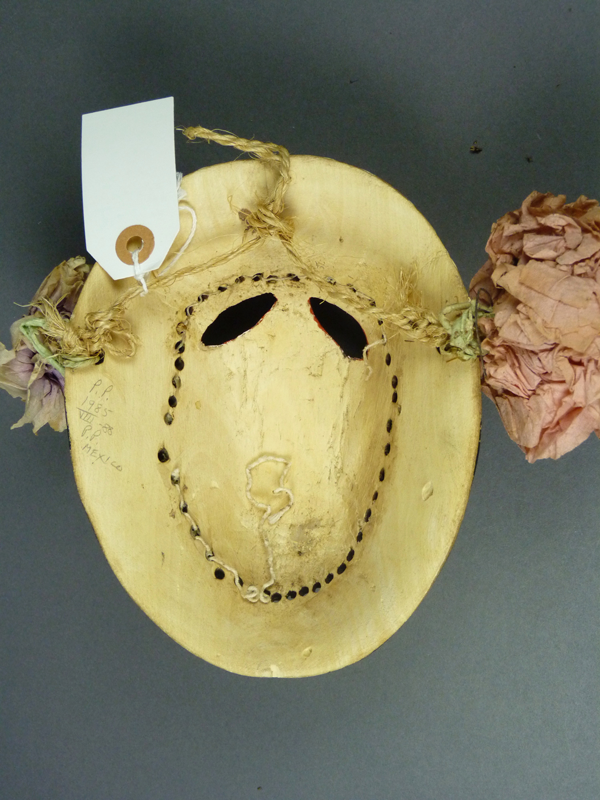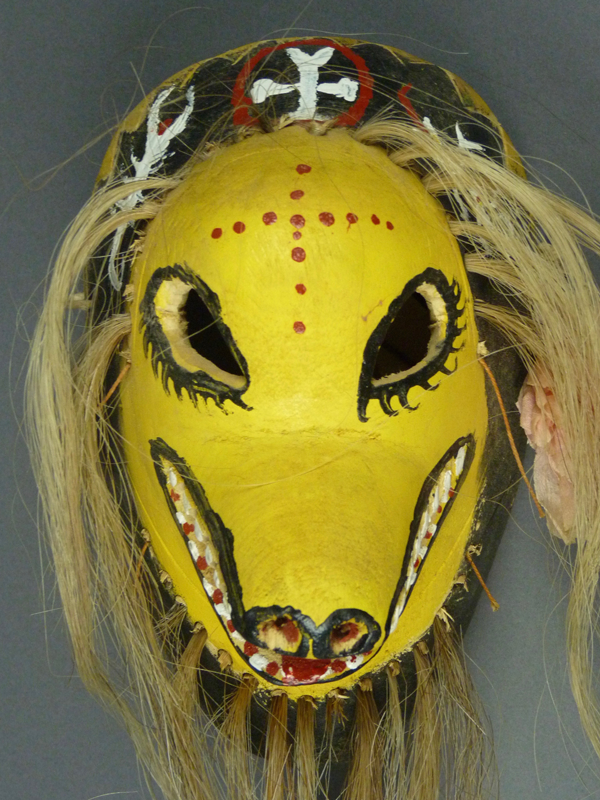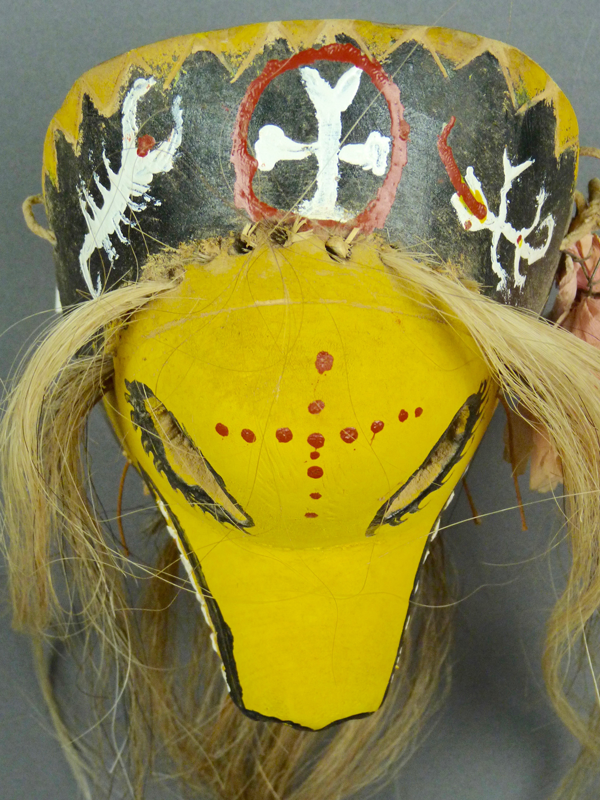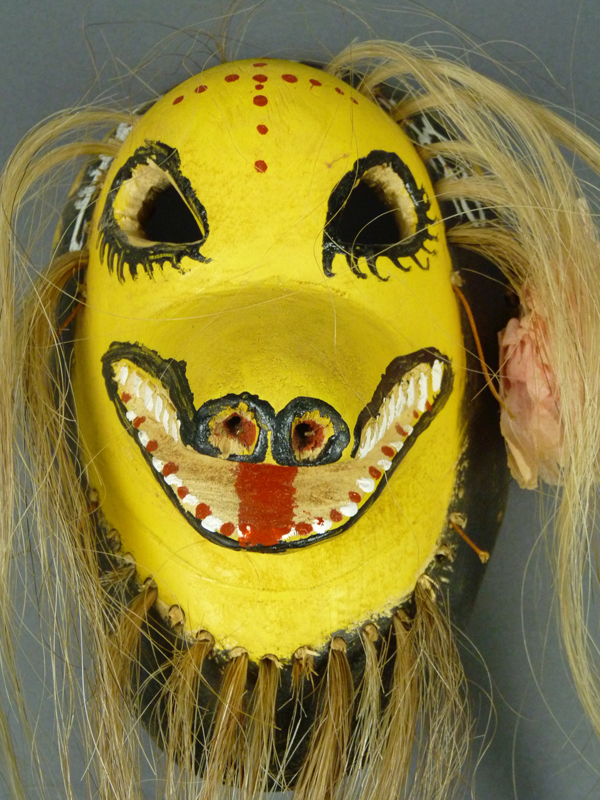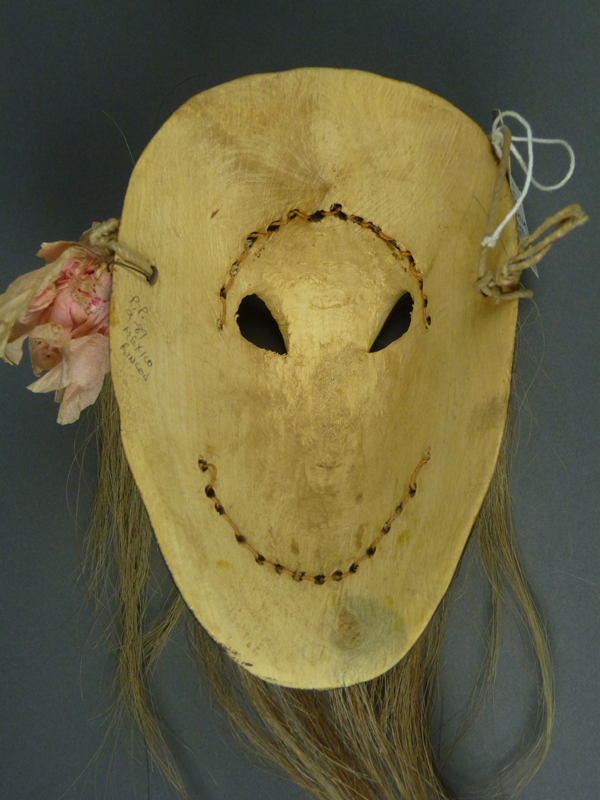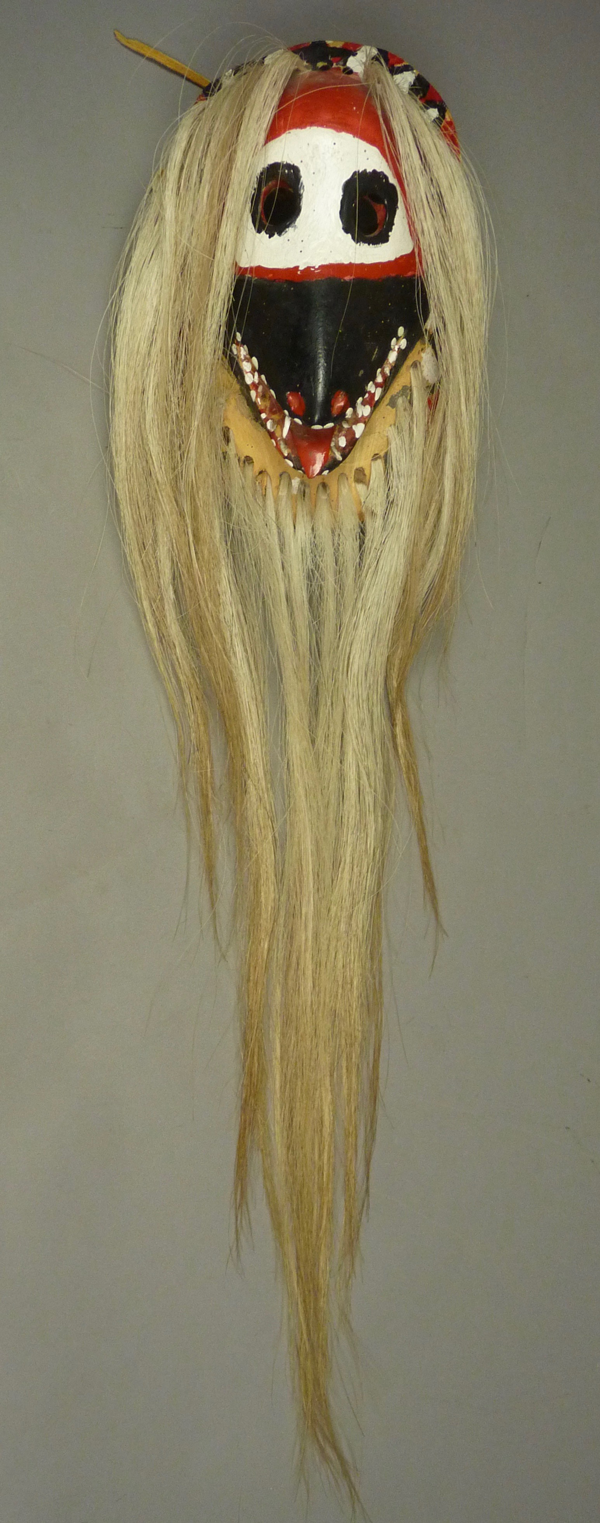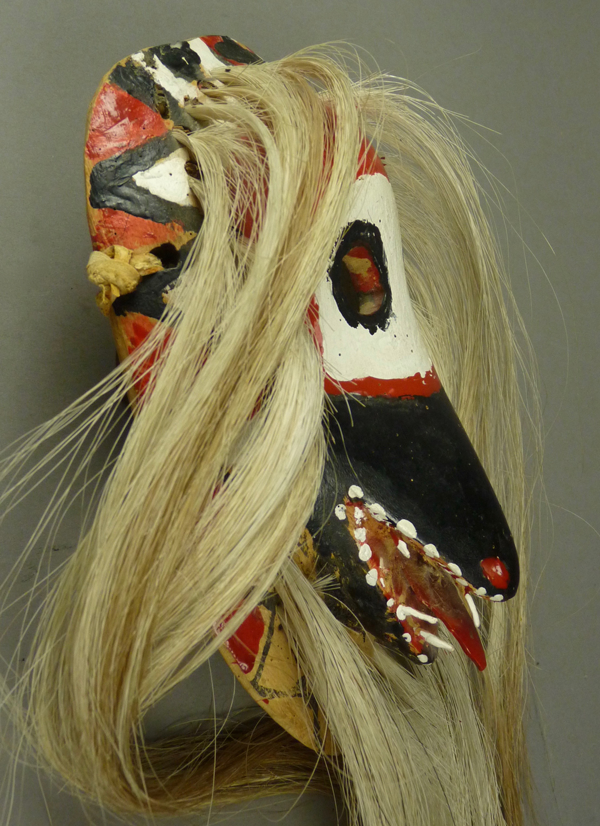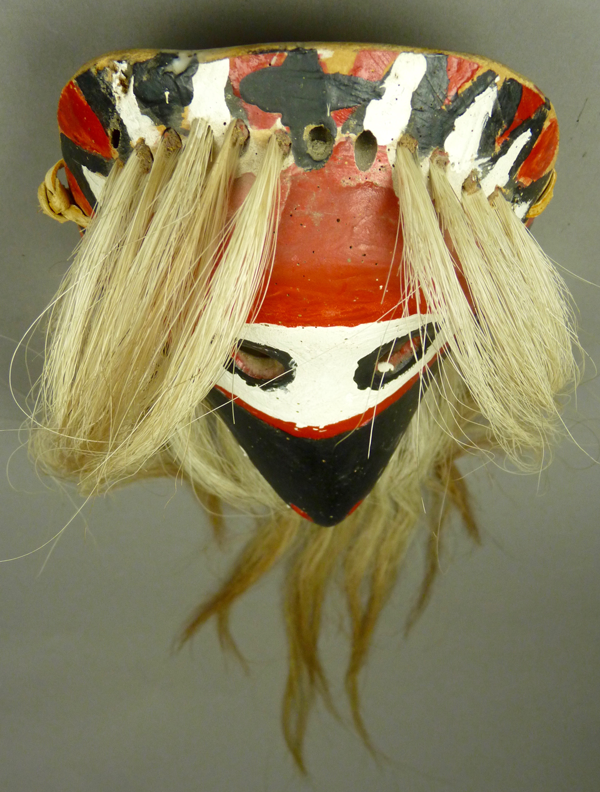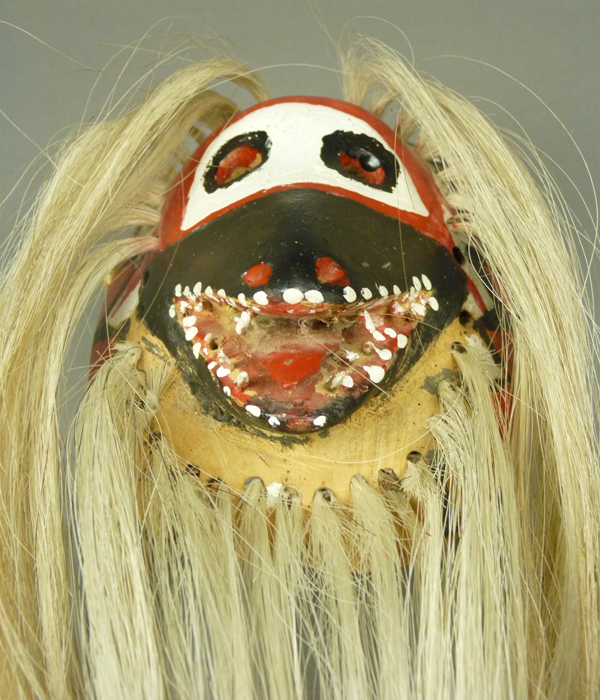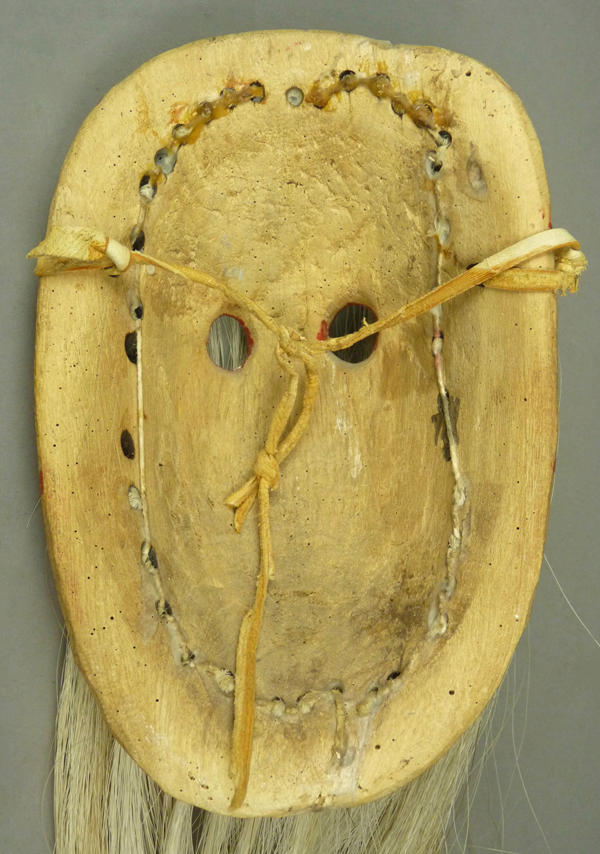In this final post about the Pascola masks of Pablo Pacheko I will show some unusual masks from the collection of Barney Burns and Mahina Drees, ending with one more of mine. We will look at masks with vulture or turkey (?) faces, one with a parrot face, and a few more with canine faces. I will start with the vultures.
The first of these lacks Pablo’s typical style of forehead cross, and we will see a variety of crosses on today’s masks. It does have his usual painted lower eyelashes. Documentation is lacking re dates and length of use.
I suppose that this could be a turkey or a turkey vulture.
Perhaps two different hands contributed to the painted rim design.
When is a smile not a smile? When what looks like a mouth is not a mouth.
In the chin view, we do see Pablo’s usual pegs, holding the hair bundles.
This mask was only briefly danced. There is minimal staining from use.
On this second example the paint seems more likely to be original. Again, documentation is lacking.
Still we face the question- is this a vulture? When in doubt, I always vote for the desert denizen over the domesticated animal.
We see the usual painted lower eyelashes.
This beak is carefully carved.
At least this mask has a typical Pablo style forehead cross.
What the prey would see, if somehow still alive.
One finds some staining from use.
And here is a third example of these enigmatic masks. This one was collected in 1987, providing us with an estimated date for the other two (1980s).
This mask has a painted white tongue.
The crudely painted cross is flanked by scorpions that are typical of Pablo’s masks. Maybe the jagged lines represent snakes.
“PP May 1987” reads the collection note on the back. This Vulture has significant staining from use.
Here is the Parrot, which was collected in 1990.
This mask is only slightly different from the vultures, yet one would never mistake one for the other.
Parrots too have tongues. Wonderfully raucous tongues.
This forehead cross was carefully incised.
There is mild staining from use.
Three canine masks follow. The first of these is a very strange looking dog. It was collected in 1985, after having been danced for three years.
Is there actually a dog with such a narrow nasal ridge?
This is a dog’s toothy mouth though.
Flowers flank the forehead cross.
Grrrr!
There is mild staining from use.
This mean looking yellow Dog (or Wolf) Pascola mask was collected in 1989.
The forehead cross is flanked by a scorpion and a lizard.
There s a second cross, of dots, below the first.
This carver appears to have loved the punch of color. In effect he was a pop artist.
There is moderate staining from use.
Just as I was preparing this post, I realized that I possess one more mask by this carver, but hanging unidentified on my wall. I Had purchased this mask from Spencer Throckmorton’s Manhattan gallery in 1995, and loved it for 24 years without noticing that it was so typical of Pancho’s hand. The hair provides an intact example of the preferred Sinaloan long brows and beard.
By now we have learned that Pancho sometimes carved round eyes.
This sloppy cross is not unexpected on a mask by this carver.
In the forehead and chin views one can sometimes see the pegs holding the hair bundles.
We are quite familiar with these protruding tongues.
Such a toothy mouth! This mask is 8¼ inches tall, 5¼ inches wide, and 2¼ inches deep.
The back of this mask has significant staining from use.
Next week we will examine Mayo Pascola Masks by Guillermo Valenzuela.
Bryan Stevens

